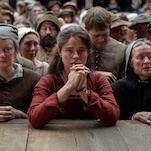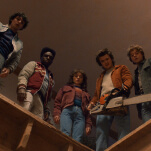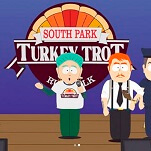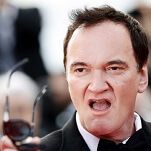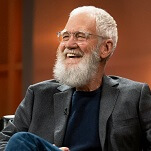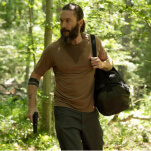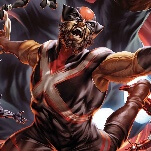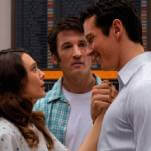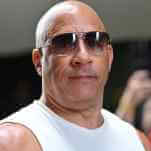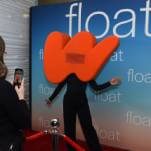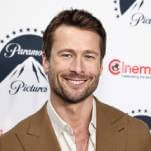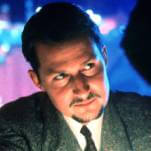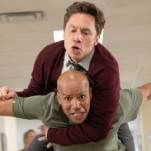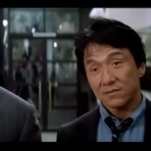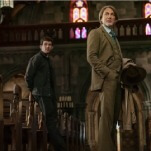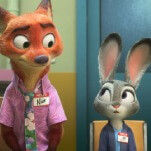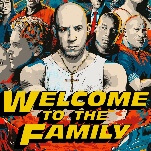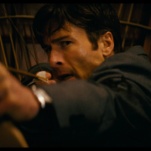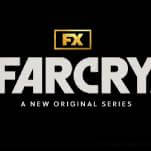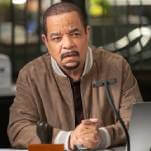Steven Soderbergh tore down Matt Damon to build him back up
There was a time—call it the majority of the ’00s—when George Clooney starred almost exclusively in movies directed by himself, the Coen Brothers, or, most often, Steven Soderbergh (or, barring Soderbergh’s availability, someone else associated with a past Soderbergh film). It makes sense that Clooney would do more movies with Soderbergh than with any other director (currently six, though his self-directed performances are closing in with five). Soderbergh restarted and boosted Clooney’s big-screen career—somewhat paradoxically by directing him in what was, at the time, his lowest-grossing movie as a post-ER leading man. Despite its middling box office, Out Of Sight capitalized on the movie-star promise Clooney had shown in earlier roles. Soderbergh did his best to limit the actor’s recognizable tics (like his incessant head-nodding) while still emphasizing his classical movie-star charisma. In the long-term sense, he turned Clooney into a star.
But with his own directing career ramping up, it also made sense when Clooney parted ways with Soderbergh—unofficially and seemingly amicably, but clearly separated nonetheless. They dissolved their Section Eight production company in 2006, and Ocean’s Thirteen capped off a trilogy (representing half of their mutual output as director and star) the following year. The pair hasn’t reunited since; Clooney continued to direct while branching into collaborations with Anton Corbijn, Wes Anderson, Alexander Payne, and Alfonso Cuarón, while Soderbergh continued full speed ahead without him, averaging at least a movie a year until his retirement from feature directing in 2013.
Soderbergh probably didn’t need a replacement movie star to keep his creative juices flowing, but it couldn’t hurt his productivity to have a famous face helping his movies actually get made at a pace that might shame Woody Allen. To that end, he did a run of movies with another member of Danny Ocean’s gang: Matt Damon. In fact, technically speaking, Damon has become Soderbergh’s most frequent onscreen collaborator, appearing in seven movies for the director counting Behind The Candelabra, which was an HBO movie in the U.S. but released as a theatrical film abroad. Clooney probably still wins on screen time; he’s front and center for all six movies he made with Soderbergh, while Damon plays a more supporting role in the Ocean’s films and only does a cameo in Che. But given how closely associated Clooney and Soderbergh have been, it’s strange to consider that they didn’t work together at all during that final stretch—and that Damon was there for the director’s (hopefully unofficial) swan song. The Soderbergh/Damon collaboration may well have been a simple case of mutual admiration and enjoyment; both of them have re-upped with plenty of collaborators. Intentionally or not, though, their work together signals where both of their careers were about to head.
Clooney and Soderbergh clearly complement each other: The surprisingly brainy movie star’s game gets upped by the surprisingly stylish brainiac, who gets an infusion of old-fashioned sex appeal. Damon, while in possession of undeniable charisma, is a bit more opaque. He established enough of a persona in Good Will Hunting—the troubled but brilliant almost-golden boy—to shamelessly reprise it less than a year later in Rounders. But the films that became his movie-star calling card, the Robert Ludlum-inspired Jason Bourne series, trade on a certain blankness. There’s a dash of Will Hunting’s unexpected prodigy vibe to Jason Bourne, an amnesiac assassin who (at least initially) surprises himself with displays of virtuosic fighting and feats of athleticism, but Bourne by design can’t show too much personality. In his signature role, Damon essentially rebuilt his star persona from the ground up, growing from mysterious cipher to confident action hero. It’s a development given a comic flipside in his first three films with Soderbergh: the Ocean’s trilogy, which came to its conclusion the same summer as the initial trilogy of Bourne pictures.
Ocean’s Eleven first introduces Damon’s Linus Caldwell as another Hunting-ish figure: a prodigious pickpocket and son of an accomplished thief, recruited by Clooney’s Danny Ocean to run with the big boys (represented, naturally, by Clooney and Brad Pitt—playing a sort of movie-star old guard, even though Clooney has only been a star a few years longer than Damon). In Ocean’s Twelve and Ocean’s Thirteen, though, Linus evolves (or devolves) into a de facto little brother for Danny and Rusty (Pitt), desperate to be included in the big heist plans and fighting his way through their chummy shorthand. Ocean’s Twelve is deliberately obscure and arch enough to make the frustrated Damon more an audience surrogate than his own comic character, leaving Linus to come into his own during Ocean’s Thirteen. His subplot has him angrily fielding calls from his father, who has doubts about Linus’ insistence on using a fake nose for his portion of a casino-robbing con. “The nose plays!” becomes his mantra; Danny and Rusty agree, but possibly out of politeness—they don’t seem particularly invested. Linus also volunteers this large-nosed alter ego to seduce the casino owner’s right-hand woman (Ellen Barkin), but the movie doesn’t give Damon a fizzy romantic angle like Clooney and Julia Roberts in Eleven or Pitt and Catherine Zeta-Jones in Twelve; he lacks their impeccably cool detachment. The big linchpin moment he fights for (key to the theft of some diamonds) still positions him as a goof—as the movie’s handsomest comic relief, fake beak notwithstanding.
A good portion of Damon’s work with Soderbergh also veers toward the comedic. Damon hasn’t had a lot of success with comedy; his one collaboration with the Farrelly Brothers, the good-natured if not exactly gut-busting Stuck On You, was not a hit, and his other broad-comedy work has been in the form of cameos and/or Jimmy Kimmel appearances, giving the impression of an actor being funny only in small, unannounced doses. (Even his recurring role on TV’s 30 Rock, humorous as it was, felt this way.) A lot of these cameos derive their humor from what a serious-minded guy Damon comes across as in his early-career movies. Will Hunting has more of a comic side than many of his early characters, but his funny lines are framed as a charming defense mechanism for a wounded, brilliant young man. Since then, Damon has done plenty of action movies, but they’re usually on the sober side: the self-serious Bourne sequels, the geopolitical Green Zone, the grimness of Elysium’s heavy-handed social commentary. The subtext of Damon’s Kimmel or 30 Rock appearances remains the supposed surprise that such a serious guy could act so silly.
Soderbergh found a way to work that subversion of serious expectations, and Damon’s comic talents, into a star vehicle when he directed Damon in The Informant! It’s a movie that sounds, on paper, a bit like the kind of earnest social-issue drama Damon and Clooney often favor but, like Damon’s unreliable narrator character, turns out to be totally nutty. Damon plays real-life food-processing executive Mark Whitacre, who blows the whistle on his company’s price-fixing, only to be eventually revealed as an embezzler himself—one who hopes to rise further in his company’s ranks once the misconduct is exposed. It’s a sad story, but Soderbergh lends it a jaunty, deadpan wit without ever condescending to his players. Those characters primarily function as serious-faced foils to Damon, and Soderbergh fills many of those roles with comedians playing absolutely straight (Joel McHale, Tony Hale, Patton Oswalt, Scott Adsit, and even the Smothers Brothers), leaving handsome Damon with the comic exaggeration.
This doesn’t mean that Damon plays Whitacre as an utter goofball. He quietly flips his lid in a series of rambling voiceovers—a relatively rare instance of narration supplying a vital dimension to an actor’s performance, rather than just creating expositional shortcuts. The placidity of Whitacre’s musings, observations, and, eventually, self-justifying semi-confessions, form the growing cracks in the character’s façade; it isn’t until well into the movie that Soderbergh and screenwriter Scott Z. Burns reveal that Whitacre suffers from bipolar disorder.




